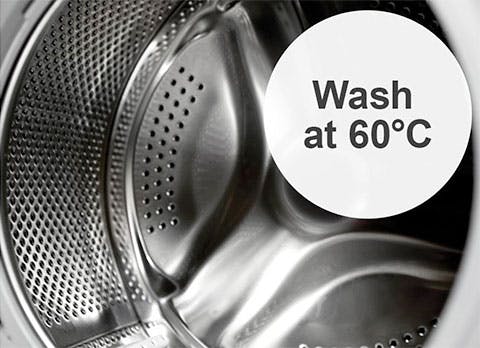
Anti-Allergy Buying Guide
Beat bedtime allergies
What does anti-allergy mean?
Generally speaking, when we use the term 'anti-allergy' in the context of bedding we're referring to a products anti-dust mite qualities. If a pillow, duvet or bedding protector is described as having anti-allergy properties it will be resistant to those little pests that love to make their home in your bed. This may mean the products have been treated with anti-dust mite and anti-fungal coatings as a deterrent, or the materials used to encase the filling of your pillow or duvets are tightly woven to make them impenetrable to dust mites.
Is anti-allergy and anti-dust mite bedding important?
However unpleasant it may sound, having dust mites take up residence in your bedding can cause health problems that interfere with your comfort and impair sleep. This is a problem that needs addressing if you're at risk, as the allergens that come with these critters can potentially trigger reactions like asthma, rhinitis and worsen eczema.
Dust mites love to live in bedding as the body heat and perspiration we produce during sleep creates the perfect cosy environment for these microscopic opportunists to thrive.
The tightly woven covers and casings used in anti-allergy bedding and mattress protectors form a barrier to stop dust mites from gaining access, while also limiting the opportunity for organic material to become deposited in the fibres of your bedding and mattress.
What's special about anti-allergy bedding?

The fillings of anti-allergy bedding items are usually composed of synthetic fibres which are largely considered to be better for allergies and asthma sufferers as they are able to withstand regular hot washes, and some people can be allergic to feathers.
Allergy-friendly synthetic fibre duvets and pillows are easily washable at home, and suitable for regular high temperature washes (60°C) without losing shape or fullness. This helps to keep them free of the dust and allergens than cause or worsen allergy symptoms, as well as maintaining a fresh and inviting place to sleep. Natural fibre fillings are more delicate so cannot be washed at such high temperatures, though with anti-allergy duvet protectors and pillow protectors it's still possible to enjoy the luxurious feel of feather or down without suffering.
What's special about anti-allergy mattresses?
Our anti-allergy mattresses undergo two fabric treatments which offer a combination of dust mite and allergen protection. A treatment called Hycare offers anti-microbial properties that provides durable protection against dust mites, whilst an Actipro treatment contains probiotic microflora that eliminates natural allergens found in most mattresses.
Should I use anti-allergy bedding protectors?
Using zipped bedding protectors on your existing duvet, pillow and mattress encases them completely, using tightly woven fabrics or non-porous linings to form a barrier to dust mite intrusion. Anti-allergy quilt protectors, pillow and mattress protectors also make your bed seem like a less desirable destination for the mites by limiting the amount of skin cells and sweat that deposit themselves in the fluffy fibres of your bedding and the fabric of your mattress.
What else can I do to help my dust allergies?
In addition to washing your bedding and bed linen regularly at 60°C, using zipped anti-dust mite bedding protectors or investing in anti-allergy duvets and pillows, there are other things you can do to limit the impact allergens have on your sleep.
- Limit the places dust mites can survive and thrive by steam cleaning soft furnishings like curtains and carpets.
- Vacuum carpets frequently to remove dust and allergens.
- Remove soft toys from the bed and wash them regularly.
- Use a damp cloth when dusting to ensure you're picking up the dust rather than moving it around.
- Keep clothes tucked away in a wardrobe or in drawers.
- Instead of making your bed straight away in the mornings, pull back the covers and allow it to air. This will keep your bed fresh by allowing any moisture to escape.